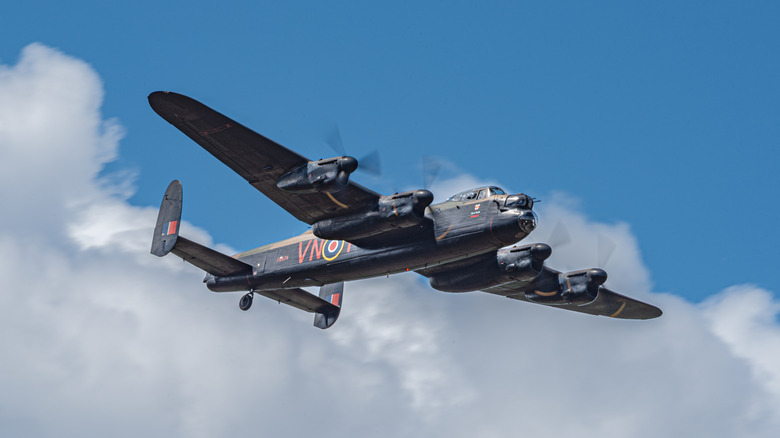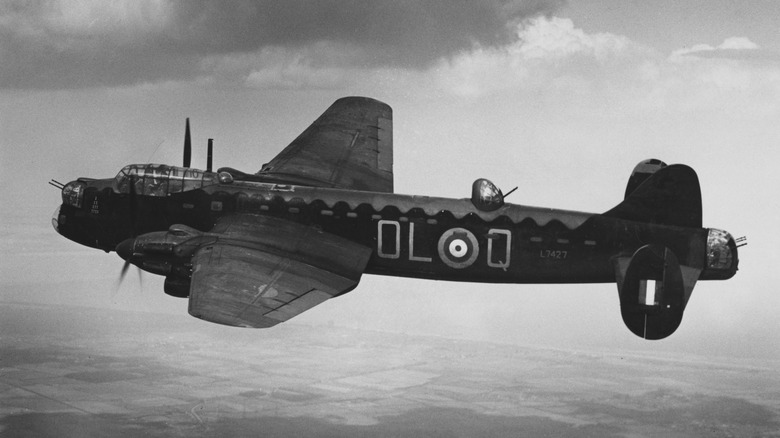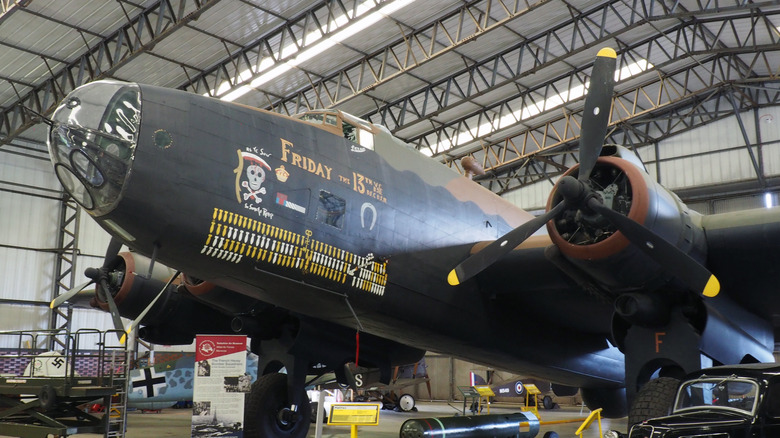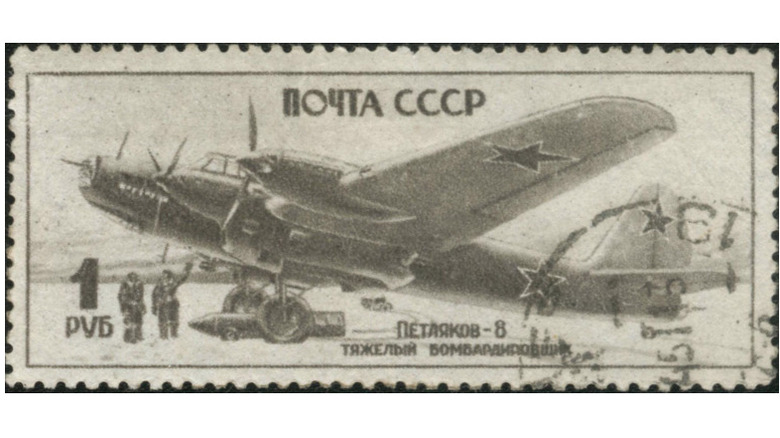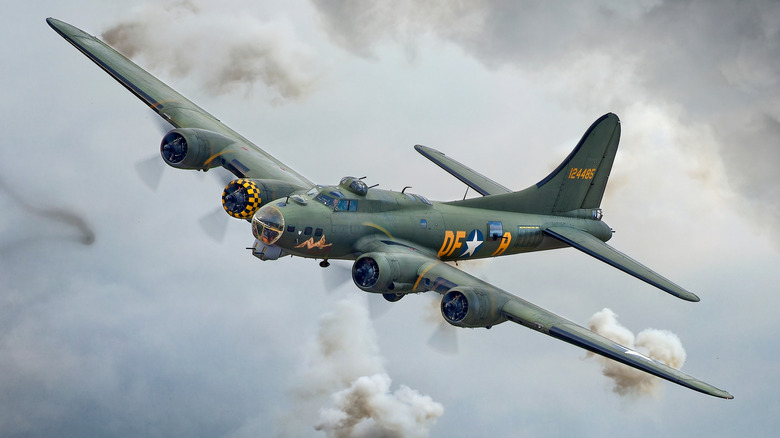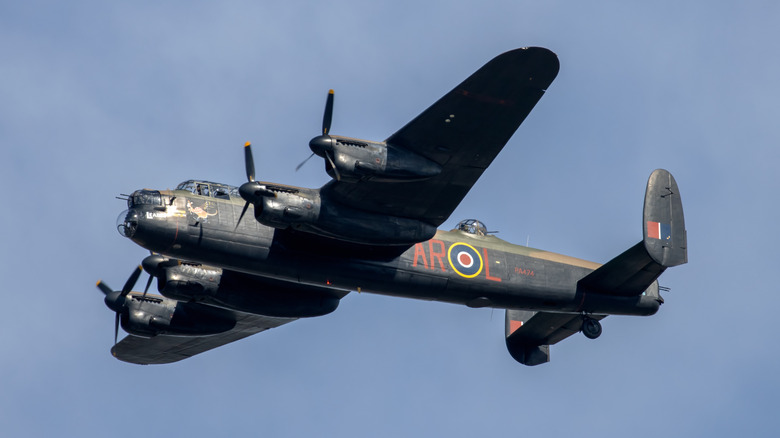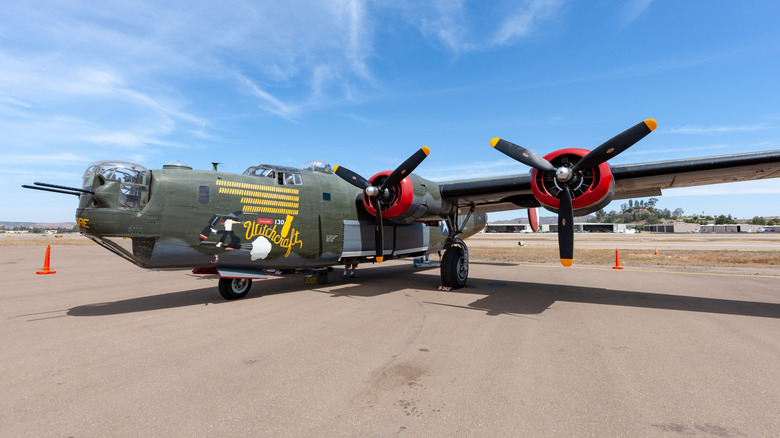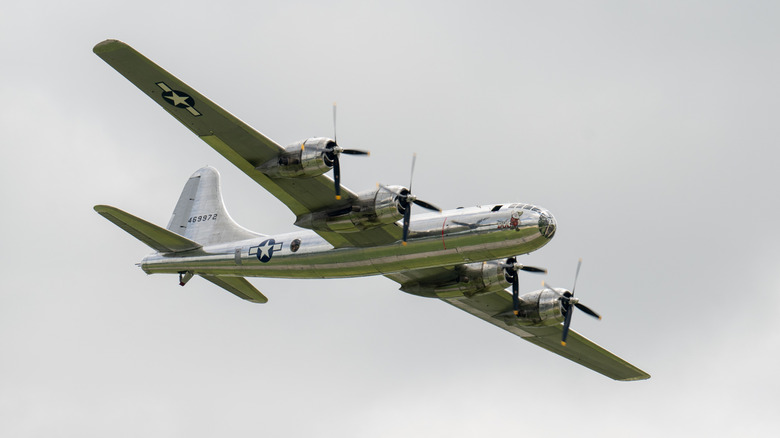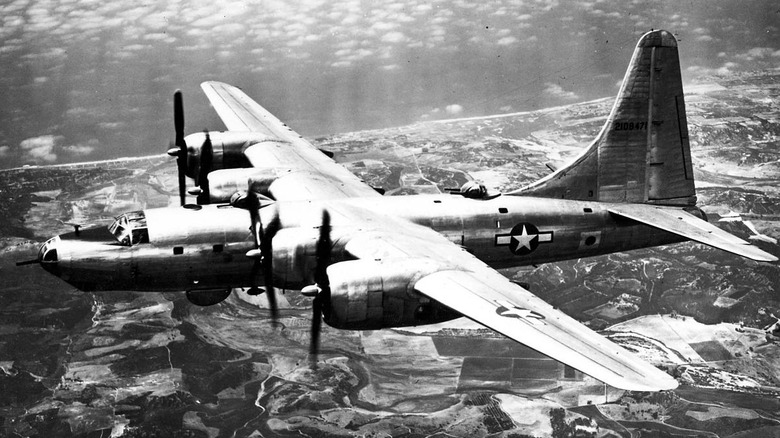Every Heavy Bomber The Allied Forces Flew In World War 2
World War II was the height of industrialized total war. Nations clashed on the sea, land, and in the air. Entire economies retooled with the express purpose of filling a vast global supply chain of unprecedented magnitude. New variants of wonder weapons emerged from factories around the world. Aviation, a discipline not even half a century old, was a major beneficiary of the mass push for war machines. Locked in a mortal struggle, nations poured forth new, faster, and more effective aircraft. Destroying the enemy's ability to develop aircraft and other war materials meant a shorter war and a favorable end.
Heavy bombers proved necessary because the large, powerful planes could carry payloads designed to flatten vast swathes of enemy resources. It's challenging to build arms and armor when the industrial heart of your nation has been destroyed. Troops are without ammunition and medicine. Engines won't run without oil and ball bearings. Consequently, Allied heavy bombers underwent significant evolution throughout the war.
Great Britain and the United States spearheaded the bombing campaign against Axis forces. However, the USSR managed to produce at least one heavy bomber, and French squadrons flew British bombers in combat, avenging their conquered nation.
Avro Manchester
The Avro Manchester heavy bomber was spawned from an interwar contract for a twin-engine bomber powered by a Rolls-Royce Vulture engine. The prototype took flight in July 1939, just weeks before the start of the war. A crew of six airmen manned radio, navigation, bombardier, and gunner duties. One pilot commanded the craft, with a co-pilot standing by. A pair of 1,700 horsepower Vultures gave it an upper speed of 265 mph, though not with its full payload of 8,000 pounds of munitions.
The Avro Manchester joined the war on November 10, 1940. Within weeks, aircrews were attacking enemy ships and other naval targets. The Rolls-Royce power plants underperformed, which ultimately doomed the Manchester. The airframe flew its final operation over Bremen, Germany, in the summer of 1942. The British transferred the plane into a training role before officially retiring it in 1943.
Handley Page Halifax
Handley Page took the Royal Air Force (RAF) contract for another bomber centered around the Rolls-Royce Vulture, but its troubled development and failure in the Manchester inspired a 1937 switch to Rolls-Royce Merlin engines. The resulting twin-tailed four-engine heavy bomber slipped the surly bonds of Earth in late 1939 and joined its first combat unit in the spring of 1941.
The Halifax had a 104-foot wingspan and was 72 feet long. It could carry its full payload of 13,000 pounds up to 1,000 miles, though a bomb load of about 5,800 pounds increased range to up to 1,860 miles. It could achieve an altitude of 24,000 feet and reach top speeds of around 280 mph. The Halifax was woefully under-defended, with early versions equipped with just a few .303-inch rifle-caliber machine guns to stave off cannon-armed German fighter planes.
The airframe entered service in October 1939, and several squadrons formed up to receive the Handley Page machines with which to defend England. While the Avro Manchester retired during the war, the Halifax served throughout, with as many as seven variants.
The Halifax found its rhythm as a night bomber executing missions against German cities. It also served in reconnaissance, transport, and glider towing roles. After the war, it continued to serve as a coast patrol aircraft until March 1952.
Petlyakov Pe-8
The British weren't the only ones percolating a brew of heavy bombers before hostilities erupted. The Petlyakov Pe-8 was also the result of pre-war development, yet it would prove to be the USSR's only four-engine bomber of the war. The Pe-8's initial flight tests commenced at the end of 1936. It proved to be a competent bomber for the time, with an altitude ceiling greater than some contemporary fighters.
The Pe-8 was as brutal as a Soviet winter. The prototype was equipped with four supercharged M105 engines, each producing 1,100 horsepower. Soviet engineers later updated the powerplants with Mikulin Am-35As, but it was the heavy bomber's bite that caught the attention of the Luftwaffe. The crew operated four total 7.62 and 12.7 mm machine guns in addition to a pair of 20 mm cannons, one fore and one aft.
The Petlyakov used all that power to carry a massive bomb load, with the expected detractions. Its weight made it slow, gave it a poor climb rate, and made it a rich target. It was also prone to sudden fires. Nonetheless, the Pe-8 entered action against German industrial and logistical targets. German fighter swarms outclassed the Pe-8, putting it among the worst bombers of the war. The Soviet Union only managed to build 93 of them. By 1944, the Soviet command pulled the few combat survivors and turned them into test beds. None are believed to have survived the war.
Boeing B-17 Flying Fortress
The B-17 Flying Fortress was born from a 1934 request by the U.S. Army Air Corps for a four-engine bomber. Boeing responded with a prototype that took to the skies in 1935. By the time the U.S. joined the war six years later, Boeing had evolved to the B-17E variant. The Flying Fortress earned its nickname. It bristled with .50-caliber machine gun emplacements for defense on long-range, escortless bombing missions. Its quartet of powerful engines improved power and redundancy, and its bomb bay hungered for ordnance.
The B-17G proved to be the quintessential variant when it entered the war in 1943. Each aircraft required a crew of 10, including pilots, navigators, bombardiers, and gunners. It operated at altitudes between 25,000 and 35,000 feet. Weight, distances, and fuel dictated the payload, but a typical B-17 on a long-distance mission might carry 4,000 pounds of bombs, whereas it could carry 8,000 pounds on shorter missions.
Boeing built over 12,700 B-17s for the war effort. The aircraft was well-liked by its aircrew and fought fascism as fiercely as any during the war.
Avro Lancaster
The Avro Lancaster proved to be England's heavyweight bomber extraordinaire. It was what the Manchester hoped it would be. A little younger, a little wiser, and with mistakes learned from the Manchester in its back pocket, the Lancaster took off in January 1941 and was in combat only 3 months later.
At 69 feet long and 102 feet wide, the distinctive twin-tailed rear boom set the Lancaster apart. Four Merlin engines, each making 11,460 horsepower, pushed the Lancaster to a maximum speed of 280 mph. It had a 14,000-pound payload that it could carry up to 1,660 miles. The Lancaster was a capable and serious machine, and the British produced over 7,000 during the war.
For air-to-air defense, the Lancaster relied on several gun turrets (sporting those pea-shooting .303s) mounted around the fuselage. Nonetheless, it became one of the most legendary planes of World War 2, doing everything from dam-busting German hydroelectric plants to sinking the legendary battleship Tirpitz.
While the Lancaster made it through the war, crews considered it underarmored. Although thousands emerged from factories, only a pair of airworthy Lancasters are known to exist today.
Consolidated B-24 Liberator
The rest of the list consists of American bombers. The United States was the preeminent industrial power on the Allied side and provided a vast array of military equipment worldwide. In 1939, America's participation in the war, if not precisely its role, became a defined reality. Britain was trying to stave off an invasion during the Battle of Britain, and the United States was willing to sell military equipment to the besieged island nation as part of the Lend-Lease Act.
Designed in 1939, the initial versions of the Consolidated B-24 Liberator lacked the armament and self-sealing fuel tanks to perform offensive missions. The Liberator entered the war in England, ferrying VIPs and transporting cargo. Prime Minister Winston Churchill used a B-24 as his personal transport plane.
The war heated up, and so did production of the B-24. The H and J models arrived with no fewer than 10 .50-caliber machine guns and a maximum bomb load of about 8,000 pounds. Operated by a 10-man crew, including a pilot and co-pilot who had to wrangle four 1,200-horsepower Pratt & Whitney R-1830-43 engines.
The battle-ready B-24 performed spectacularly over the skies of Europe. The overall design proved so effective that the Navy adopted it to create its own version. The B-24 derivative was known as the Consolidated PB4Y-2 Privateer. It served as a long-range patrol and submarine and ship hunter in both the Atlantic and Pacific Ocean theaters of war.
Boeing B-29 Superfortress
If the B-24 was the mid-war design sent in to help the B-17, then the B-29 Superfortress was the modern marvel sent to finish the job. It made its first flight in September 1942 and entered action on June 5, 1944.
The B-29 represented the pinnacle of America's industrial capabilities. It was leaps and bounds ahead of anything else in the war, to the extent that it also saw action in the Korean War years later. The improvements included remote-controlled gun turrets, pressurized crew compartments, and a maximum bomb load of 20,000 pounds deliverable to targets up to 1,500 miles away.
The Superfortress operated all around the world, but its most infamous feat occurred in the Pacific Theater. The ultra-long-range meant it could reach the Japanese home islands and reduce Japan's ability to fight, much like Germany.
The B-29 Superfortress holds a unique place in history as the only aircraft to have deployed a nuclear weapon in combat. The Enola Gay and Bockscar, two B-29s, dropped atomic bombs on Hiroshima and Nagasaki, effectively bringing the war in the Pacific to a close.
Consolidated B-32 Dominator
Though the opening of the nuclear age brought an abrupt end to the Second World War, no one could be sure it would be so. And while the B-29's historical role is etched into granite, it did not always seem so sure. The Superfortress was complex and prone to failure. That's why yet another heavy bomber was not only in the manufacturing pipeline, but in the air.
The Consolidated B-32 Dominator used Wright R-3350 Duplex-Cyclone 18-cylinder radial engines to get it aloft. It could carry a bomb load of up to 20,000 pounds and hit a max speed of 357 mph. Evolutionarily, the Dominator had one foot out of the Second World War and one into the Cold War.
Only a few of the late bombers saw combat. The Dominator saw action in the Philippines and flew missions over Japan before the atomic attack. While the B-29 received the nuclear mission, the Dominator earned an intriguing footnote of its own. While on a photography run two days after hostilities ceased, renegade Japanese fighters jumped a flight of B-32s. The Dominators spewed thousands of rounds during an aerial battle that lasted for hours. All managed to survive, making it home safely as possibly the very last air combat of the war.
